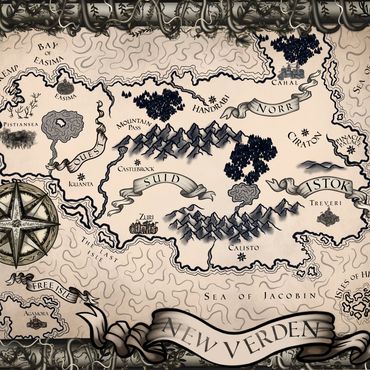COMMISSIONED ART FOR 'QRG'
Art by theaishapectyo @ Instagram
maps & family trees!



POV CHARACTERS OF BOOK THREE
SIDE CHARACTERS OF BOOK THREE
A note from the author
95% are interconnected
I didn't set out to write a large sprawling world filled with various families and characters but here we are. The Queen's Red Guard series is more about these families, which are all interconnected. It's a reflection of my own huge family. The Sikoras were allies with the Baliks before they intermarried and Almira was born. So we have cousins on either side. But the Sikoras were also cousins to the Cineges. Now that Almira marries Alton, she's connected to House Kral but where does Norr fit in? Well, by marriage of course. And where do the Seaver brothers stand? Well, they all end up connected to Balikian and Sikorian women. Now, how about the Free Isle? Well, Sanaa spent time there, she takes them on as her people. So really, most everyone is related either by blood or marriage. The books have 2 family trees, which I recommend you use as reference to wrap your head around the characters.
One of the reasons why I wrote so much background into the books is to give myself space in case I want to write other series set inside of this universe. Series that can be read as stand-alone or for those of you really into it, you can read them in order.
For you genealogy nerds, here's some facts:
- The oldest house is House Sikora and likely followed by House Cinege.
- Around 1,000 years ago, House Balik rose when Lady Dominia burst into the scene and began the alliance with Suid.
- House Seaver was established sometime after that, it is the highest ranking of the Garian Houses.
- The Norrian houses are all interconnected; which is why Ivar of House Benici and Arrigo of House Markel are cousins.
- The nouveau riche in the arena is House Kral, who took the High Throne by blood. Likely descendants of the Corsikan Kings.
- Sanaa is the last of House Cinege because Almira didn't bear Lord Edgar children. That ends thousands of years of legacy. Which means she's also very rich considering she inherits half the Cinege fortune (Almira inherits the other half by marriage) & (Lord Edgar spent a lot of the Cinege gold in his war against Alton but that still leaves properties and land).
- The richest of the Houses is House Balik and House Markey. Balik because of the shipping trade and Markey because of the frozen mines in the north.
- The First People settled in Suid, they were all dark skin, black people. House Sikora and House Cinege are from this lineage.
- The Second People settled to the north and became known as the Brutakans, who came before the Corsikans. Alton likely descended from them.
To explain the races of the world, we need to look at migration patterns. The First People kept to themselves, so they stayed in Suid but the Brutakans were explorers and likely settled in what is now Ouest, Norr, and Istok. People of color found in Ouest (Pistians) and Istok (Garians) are likely due to mixing with some of the First People, both Pistians and Garians had a lot of contact with Suidians because of trade (Pistians traded by land, Garians traded by sea). The Free Isle was settled thousands of years later, by Asiatic people who stayed to themselves and founded the Free Isle.
There are a few 'native' languages outside of the common tongue they all speak. You have Old Suidian, Garian, Pistian, Freenian, and Nikrian, an ancient Norrian language. The Old Corsikan Language is dead but must be studied by all Leys as old texts are often in Corsikan (think what we consider Latin).
Copyright © 2025 Isabelle Olmo - All Rights Reserved.
.png/:/cr=t:4.55%25,l:0%25,w:100%25,h:90.91%25/rs=w:515,h:234,cg:true)